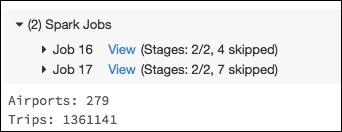-
Book Overview & Buying

-
Table Of Contents

Learning PySpark
By :

Learning PySpark
By:
Overview of this book
Apache Spark is an open source framework for efficient cluster computing with a strong interface for data parallelism and fault tolerance. This book will show you how to leverage the power of Python and put it to use in the Spark ecosystem. You will start by getting a firm understanding of the Spark 2.0 architecture and how to set up a Python environment for Spark.
You will get familiar with the modules available in PySpark. You will learn how to abstract data with RDDs and DataFrames and understand the streaming capabilities of PySpark. Also, you will get a thorough overview of machine learning capabilities of PySpark using ML and MLlib, graph processing using GraphFrames, and polyglot persistence using Blaze. Finally, you will learn how to deploy your applications to the cloud using the spark-submit command.
By the end of this book, you will have established a firm understanding of the Spark Python API and how it can be used to build data-intensive applications.
Table of Contents (13 chapters)
Preface
 Free Chapter
Free Chapter
1. Understanding Spark
2. Resilient Distributed Datasets
3. DataFrames
4. Prepare Data for Modeling
5. Introducing MLlib
6. Introducing the ML Package
7. GraphFrames
8. TensorFrames
9. Polyglot Persistence with Blaze
10. Structured Streaming
11. Packaging Spark Applications
Index

